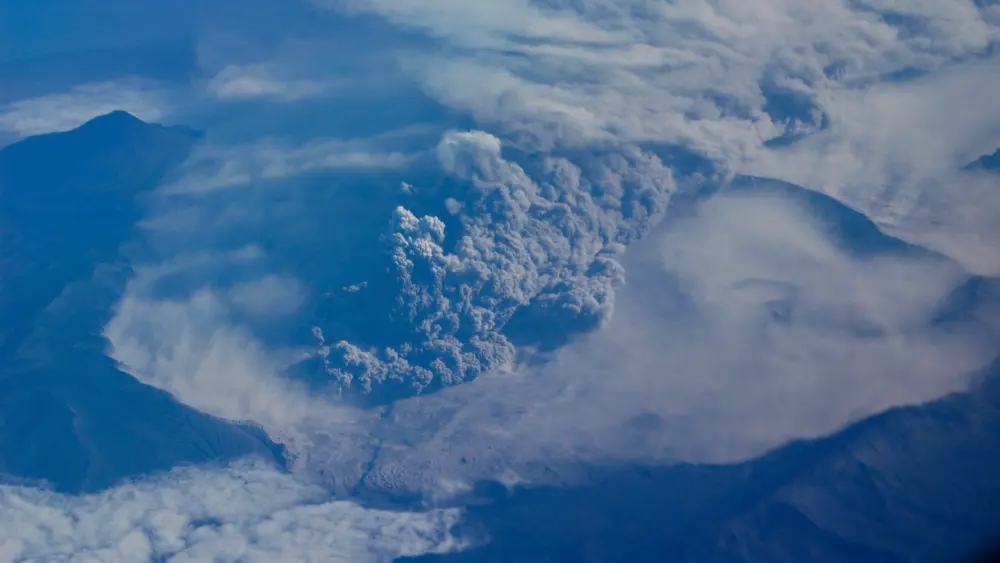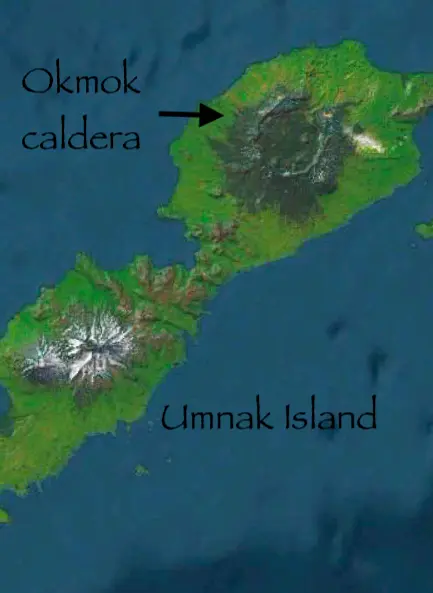 The crater from Mount Okmok’s eruption 2,000 years ago dominates Umnak Island in the Aleutians. From Google Maps.
The crater from Mount Okmok’s eruption 2,000 years ago dominates Umnak Island in the Aleutians. From Google Maps.
Story by Ned Rozell
A circular scar on Alaska’s face speaks to an event that may have contributed to the fall of societies on the far side of the world.
Two thousand years ago, Alaska’s Mount Okmok volcano spewed ash high into the atmosphere, for months. Today, a crater 6 miles from rim to rim marks ground zero on Umnak Island, 75 miles from Dutch Harbor.
Scientists including Joseph McConnell of the Desert Research Institute in Reno, Nevada, and Alaskans Jessica Larsen and Janet Schaefer are among the authors of a paper tying Okmok’s massive eruption to the weakening of Mediterranean societies and the subsequent rise of the Roman Empire.
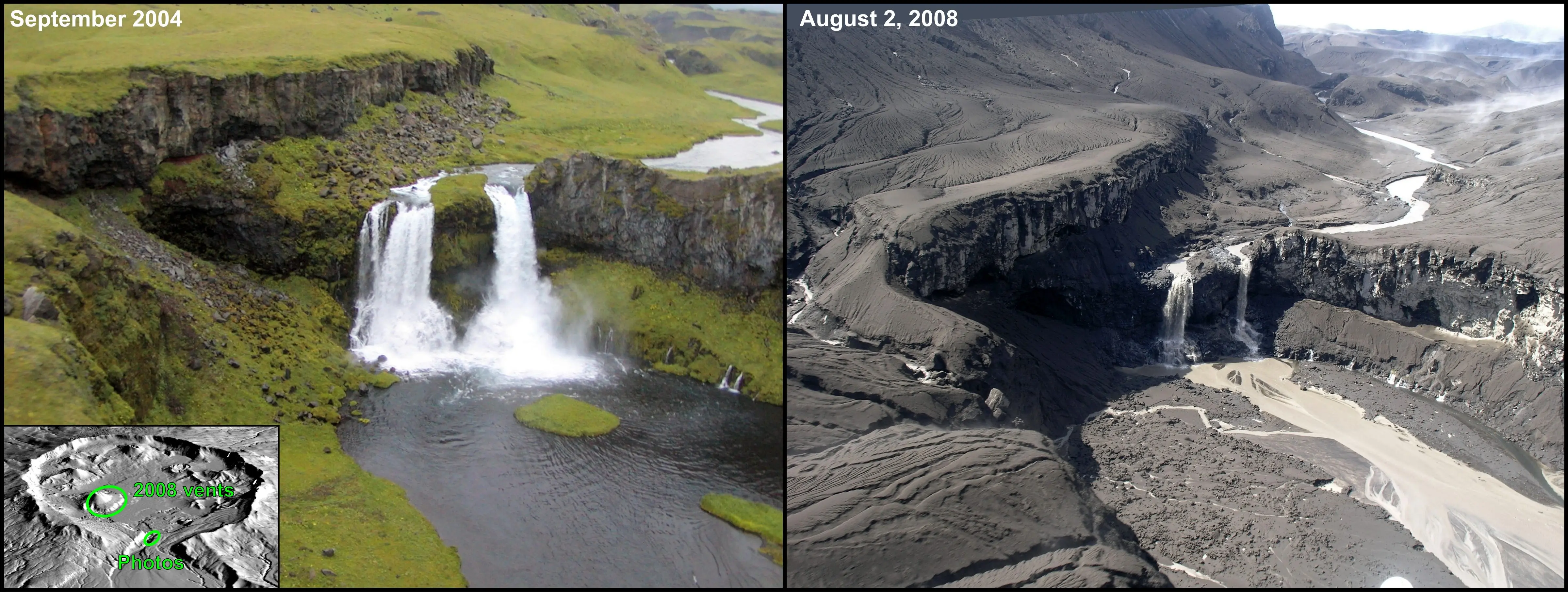 Janet Schaeffer of the Alaska Department of Natural Resources Geological and Geophysical Surveys took both these photographs of Crater Creek, the outflow stream from Okmok caldera. She took the second photo in 2008, after a modern eruption much smaller than the one in 43 BC. Photos by Janet Schaeffer, Alaska Volcano Observatory/DGGS.
Janet Schaeffer of the Alaska Department of Natural Resources Geological and Geophysical Surveys took both these photographs of Crater Creek, the outflow stream from Okmok caldera. She took the second photo in 2008, after a modern eruption much smaller than the one in 43 BC. Photos by Janet Schaeffer, Alaska Volcano Observatory/DGGS.
By reflecting sunlight back into space, the particles Okmok injected into the atmosphere may have caused a cold period as much as 7 degrees Celsius (4 degrees F) below normal for two years, the authors wrote. Crop failures, disease and other problems followed the eruption.
“We thus postulate that this extreme climate shock — among the most severe of the past 2,500 years — contributed to reported social unrest and facilitated political change at this important juncture of Western civilization,” McConnell and his coauthors wrote in a 2020 paper.
43 BC was one year after Julius Caesar was assassinated, an event that weakened the Roman Republic and the Ptolemaic Kingdom of Egypt.
“Climate proxies and written documents indicate that this struggle occurred during a period of unusually inclement weather, famine and disease in the Mediterranean region,” the authors wrote. “Historians have previously speculated that a large volcanic eruption of unknown origin was the most likely cause.”
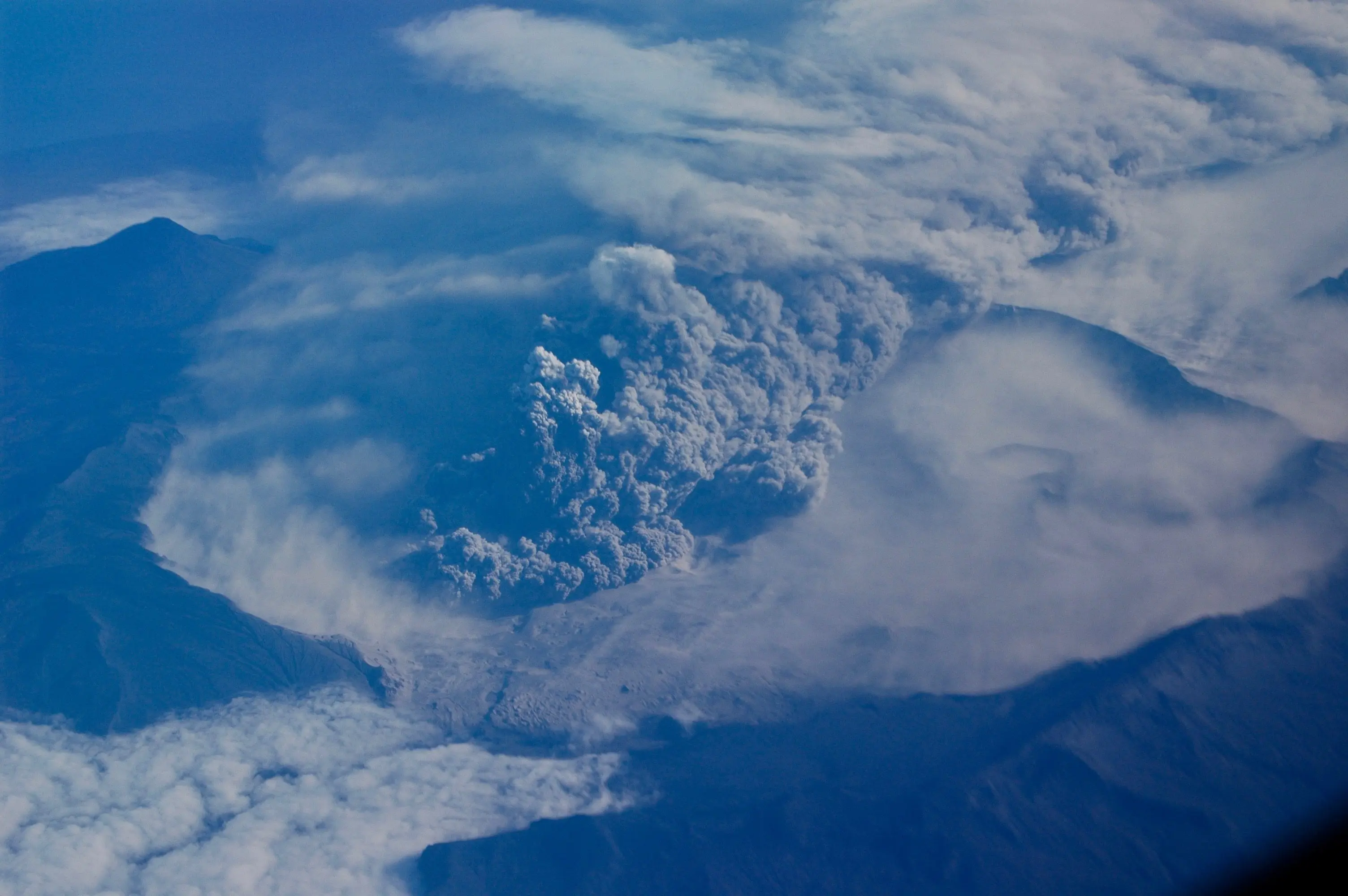 Mount Okmok erupts explosively on August 3, 2008. Photo by Burke Mees, Alaska Airlines.
Mount Okmok erupts explosively on August 3, 2008. Photo by Burke Mees, Alaska Airlines.
Researchers discovered the smoking gun when they spotted dark layers within five cylindrical ice cores from deep within the Greenland Ice Sheet and another from arctic Russia. They melted the ice samples to find tiny brown specks a volcano had erupted. The chemical composition matched Mount Okmok in the Aleutian Islands.
Along with their fingerprinting from the ice cores, the authors include other evidence for a worldwide cold period, including a “rare frost ring recorded in bristlecone pine trees from California’s White Mountains (that indicated) anomalous, below-freezing temperatures in early September 43 BC.”
A few of the researchers erupted Mount Okmok within a climate model; virtual Earth responded with widespread cool temperatures in the northern hemisphere in 43 BC and the year after.
The scientists also combed ancient texts of writers including Greek historian Plutarch. Plutarch wrote that the greatest hardships faced by Antony and his army after their defeat in April 43 BC was famine; soldiers ate roots, bark, and animals “never tasted before by men.”
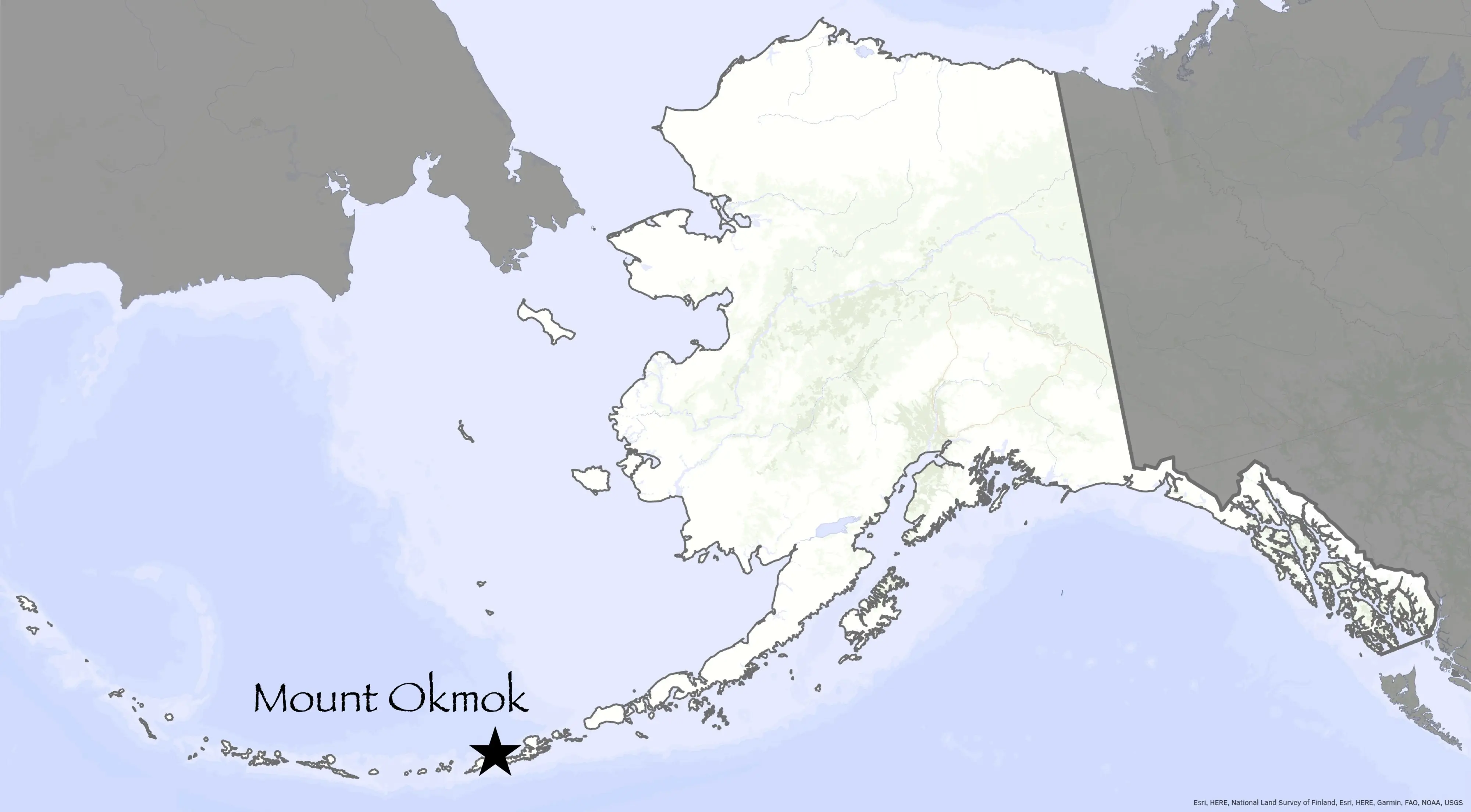
“While such hardships probably spring in part from conflict and political turmoil, our evidence now suggests an additional strong environmental context,” the authors wrote.
That disruptor of the environment was one of the 55 recently active volcanoes that pimple the skin of Alaska, each monitored today by scientists with the Alaska Volcano Observatory.
Since the late 1970s, the University of Alaska Fairbanks Geophysical Institute has provided this column free in cooperation with the UAF research community. Ned Rozell ned.rozell@alaska.edu is a science writer for the Geophysical Institute.




